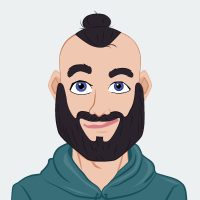- Home
- Advice and support
- Selective Dorsal Rhizotomy (SDR) for muscle spasticity
Selective Dorsal Rhizotomy (SDR) for muscle spasticity
Selective Dorsal Rhizotomy (SDR) is a surgical procedure aimed at reducing spasticity (tight and stiff muscle tone) in the lower limbs.
It is mostly used for children with spastic diplegia (2 limbs affected).
Around 1 in 4 children born with cerebral palsy (CP) have 2 limbs affected.
Aims of SDR surgery
The surgery aims to:
- reduce the pain caused by spasticity
- achieve a long-term reduction in spasticity
- improve function and mobility
- increase independence
- increase range of motion and improve positioning
Most of the evidence for SDR relates to children aged 4 to 10 years. Some centres perform the surgery on children outside this age range.
Selective dorsal rhizotomy candidates
In general, SDR in the UK is not possible when the following are present:
- hip dislocation and fixed muscle tendon contractures (permanent tightness and shortening of muscle or joint)
- mixed type CP with dystonia, athetosis or ataxia
- scoliosis (curvature of spine)
- acquired brain or spinal injury, such as meningitis, congenital brain infection, head trauma or hydrocephalus (excess fluid on the brain)
- genetic or progressive neuro-degenerative conditions
Selective dorsal rhizotomy side effects
Like any medical procedure, SDR can carry risks. It will not suit all children with CP. Some will benefit and some may see no benefit or their condition may even deteriorate. Discuss potential risks and side effects with your child's surgeon.
Permanent complications are rare, but risks include:
- temporary altered sensation although permanent numbness is rare
- constipation and urinary retention
- back pain
- weakness in the legs
- discouragement in the patient due to the length of therapy
SDR can highlight weaknesses elsewhere. For example, where muscles working alongside the spastic muscles have adapted to compensate for the increase in muscle tone.
Questions about SDR
You may want to ask your child's medical advisers the following questions:
- What does the procedure involve in detail?
- What are the benefits to my child and family as a whole?
- What is the likelihood of achieving those benefits?
- Could this procedure make things worse?
- What are the risks?
- Are there any alternatives?
- What care will my child need after the operation?
- What happens if something goes wrong? This could be important if you are having the surgery overseas.
- What may happen if my child does not have the procedure?
Getting SDR in the UK
Some British paediatric neurosurgery centres offer SDR surgery through the single-level approach. The NHS has funded some cases. Others have self-funded through the NHS hospital treatment top-up scheme.
Costs of SDR
NHS England funds SDR surgery for children whose CP mainly affects their legs. To be considered for SDR, your child will usually be:
- aged 3 to 9 years
- identified as potentially suitable by a paediatrician or paediatric neurologist
- referred to an NHS-commissioned SDR centre
This usually means:
- a diagnosis of spastic diplegia cerebral palsy
- no evidence of genetic or neurological progressive illness
- Cerebral Palsy Gross Motor Classification System (GMFCS) level II (walks with limitations) or level III (walks canes or crutches)
Your child meets the criteria, the centre will invite you to outpatient assessments. These could include X-rays, physiotherapy and MRI scans. The purpose of these tests is to make sure that the surgery is right for your child.
Last reviewed by Scope on: 22/10/2024
Was this page helpful?
Great!
Tell us how it helpedWe're sorry to hear that.
Tell us how we can improve it

